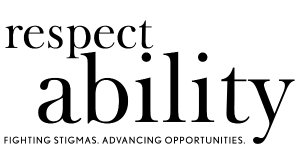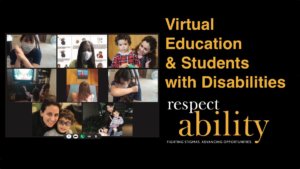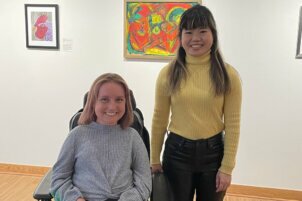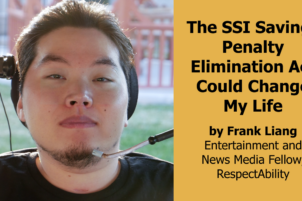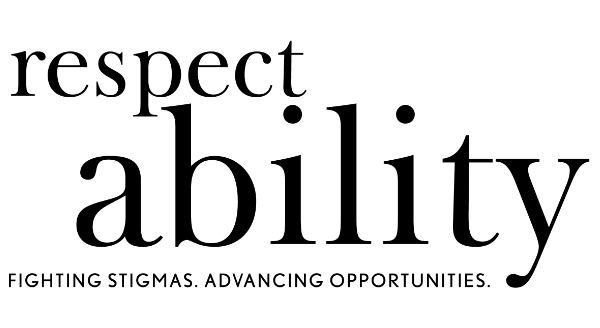Updated guide provides advice, resources and guidance on ensuring success for students with disabilities during pandemic
Washington, D.C., Dec. 18 – As millions of students with disabilities and their parents head into the winter months of this pandemic and continued fluctuations between in-person, hybrid and remote learning, the national disability inclusion nonprofit RespectAbility is offering free resources with new updates to support students with disabilities during this crisis. The updated guide, entitled Virtual Education & Students with Disabilities: Supporting Student Success in the Time of COVID-19 and Beyond, is available for free on RespectAbility’s website. The guide covers critical topics such as virtual resources from a wide range of disability advocacy organizations, home-based programs for students of all ages, live synchronous learning opportunities, social-emotional and mental health resources and state-specific information for parents of students with disabilities.
RespectAbility’s new toolkit comes out on the heals of a major new report from the Government Accounting Office, DISTANCE LEARNING: Challenges Providing Services to K-12 English Learners and Students with Disabilities during COVID-19. The report outlines major challenges, and notes that “special education services for students with disabilities—including related services like occupational, physical, or speech therapy—were particularly difficult to deliver remotely.”
“Educational success is daunting for all students, families and teachers during this pandemic,” said Debbie Fink, a former educator and RespectAbility’s Director of Community Outreach and Impact who managed this project. “However, it is even more daunting for students with disabilities. This is especially the case in underfunded school districts and for families without access to internet, technology devices and other key supports, as well as those who are English language learners. Hence, we hope these updated and consolidated resources will continue to support students with disabilities of all backgrounds, as well as their families and educators.”
Just as the COVID-19 pandemic continues to highlight critical disparities across communities in the United States, the changing demographics of America are deeply reflected by students with disabilities. In public schools across the nation, there are 6.3 million students with disabilities, a slight majority of whom identify as Black, Indigenous, and People of Color (BIPOC). In addition, 11.4 percent of students with disabilities nationwide (almost 720,000) also identify as English language learners. Their accommodation needs are compounded by the fact that many come from households that do not speak English at home, adding an extra challenge for familial interaction. It also can be harder to diagnose disabilities in children who are English language learners.
Even prior to the COVID-19 pandemic, students with disabilities faced significant challenges and barriers to attaining educational success and completing degree programs. These challenges were further aggravated by the failure of virtual learning to meet the needs of students with disabilities nationwide. Now, students with disabilities are faced with continued changes in routine, as schools continue to re-open and re-close, alternating between in-person instruction and remote instruction, creating barriers to continuity, which is critical for students with disabilities; and educators expected to manage hybrid learning are faced with a most daunting undertaking.
“It is absolutely essential that we continue to evaluate and address the particular needs of students with disabilities during this time of constant change. We must ensure that students with disabilities who are learning to self-advocate, parents and special educators understand the wide array of resources that are out there today,” said Nicole Homerin, an expert in special education who conducted extensive research for the guide and is an education consultant with RespectAbility. “Remote learning may not work for everyone, but there are so many resources that you can utilize to support your success as a student with a disability, a parent or an educator.”
Furthermore, students with disabilities also reflect the deep racial inequalities prevalent throughout the United States. Nationwide, among the class of 2018, only 66 percent of Black students with disabilities, 77 percent of white students with disabilities, 71 percent of Hispanic students with disabilities and 79 percent of Asian-American students with disabilities completed high school. This compares to 85 percent of all students without disabilities.
RespectAbility’s Virtual Education Guide offers strategies, personal advice and contact information for a wide network of different nonprofit organizations, government agencies and other parts of the wider educational system to create a more equitable future for all students with disabilities.
